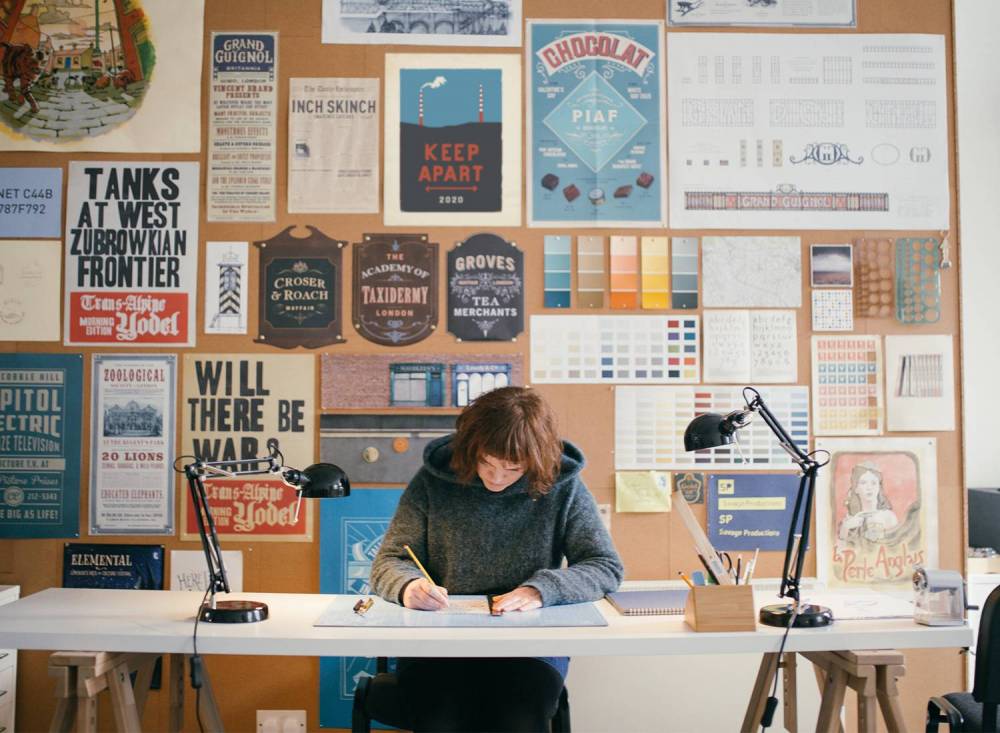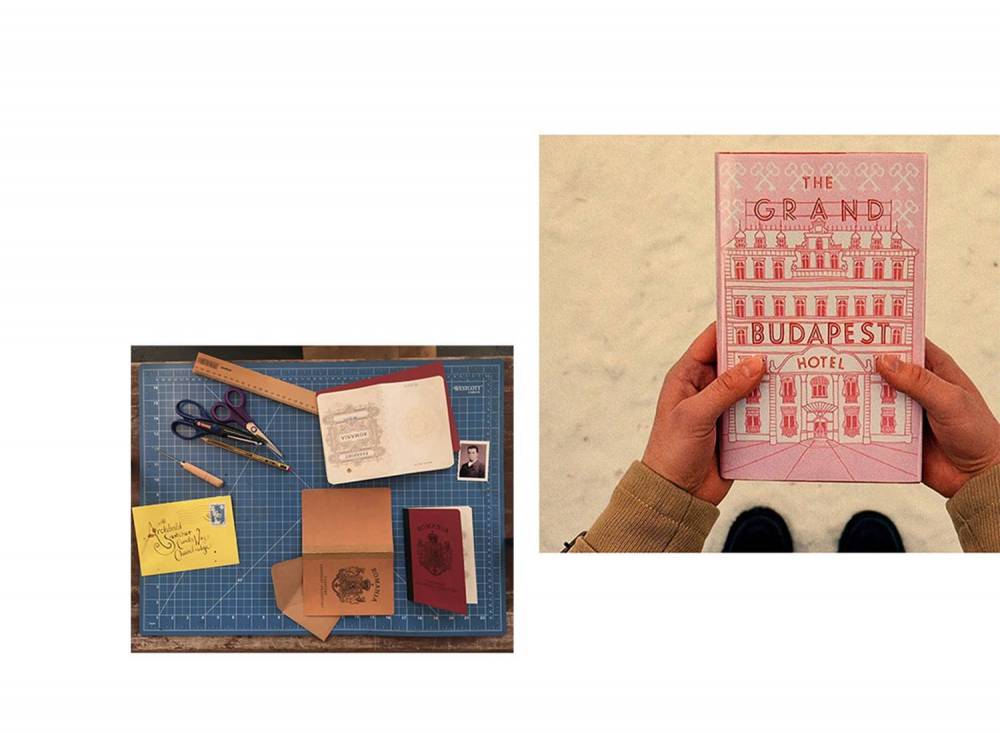Inbetween fiction and reality with Annie Atkins – Interview featured by #jungbleiben
Grand Budapest Hotel, Isle of Dogs, Tudors: Annie Atkins is indispensable in the film industry. With her unique graphics and designs for many Wes Anderson films, the designer has made herself a permanent fixture in the industry. In this interview, she talks about inspirations and habits for new projects, about her creativityflow, and how she turned Covid-19 into a new project with a charity aspect. We had a chat with her for our series “Featured by #jungbleiben magazine“.

How do you get in the mood for a new film or project? How do you start your work? Do you have some kind of ritual?
I usually start with the script, which completely immerses me in the time and place and story of a film. You don’t have a lot of time when you’re making a movie, so the first time I read through it, I also put all the graphics I need into a script outline. If there are props I’ve never done before – banknotes from a certain country or a certain style of printing, for example – I also have a hand on the keyboard and Google images as I work.
What does sustainable work mean to you?
My whole work process is sustainable. It starts with the research for a design or prop: I try to find physical pieces that I can recreate by hand. I often get inspiration from old ephemera I buy on eBay. I make sure that the materials I use to design props are sustainably made and ideally reused.
You’ve done a good job when your design goes unnoticed in the plot of a movie – have you ever felt underappreciated by the audience or did you have any self-doubt because your work went unnoticed in the film?
I think I got really lucky to have had a little light shone on my work in recent years. I remember when I was starting out (basically before I ever worked for Wes Anderson) feeling like it was a secret artform that would never get any recognition. Not just my own work, but all the work of film graphic designers around the world. Being given the opportunity to write a whole book about the craft felt like a good antidote to that!
Fake love letters, fake passports – do you feel like the world is becoming too fake and how do you stay connected to the real world while “living” in a fictitious project?
We do currently seem to be in a battle with misinformation, whether that’s news items or conspiracy theories or just photoshopped influencer images. But I will say this about fiction, actual fiction – drama – whether that’s film or theatre or songwriting or Netflix: I think that’s where we often find the truth, the emotional truth. Isn’t that why we’re so invested in it all?

Would you say it is more curse or blessing to be named in one sentence with Wes Anderson, as you’ve been working with him on various projects?
Oh my god, it’s been an absolute blessing. The Grand Budapest Hotel was a very special film in terms of graphics because of the way Wes Anderson conceives his stories, it’s almost like he made a character out of the design. Overnight it propelled the role of a film graphic designer into the spotlight, and gave me the chance to work on all kinds of creative jobs – not just in film – and also the chance to travel around the world talking about the craft. Not a day goes by when I don’t thank my lucky stars – and Wes! – for that opportunity.


A majority of Wes Anderson’s fanbase is very design-affine – do you feel more pressure while working on those projects?
I don’t think we really think about the fans when we make a Wes film, we really just think about the story at hand and the direction he’s leading us in. I think if you started making things that people expected of you, then it wouldn’t be a Wes film.
What is your favourite prop you have ever designed for a movie and why?
I love the pink book that opens the Grand Budapest, it’s very unusual to get to make a prop with the name of the movie on it.

How do you manage to creatively realign yourself again and again? How do you manage not falling into the same pattern and still keep your own style?
Well, in film work we can’t have a style. The style is determined by the piece that we’re working on at any given moment. So that opens up my palette to a lot of different periods, places, typesetting styles and so on. I think then I like to take whatever I’ve learnt from that research and incorporate it into my personal or commercial work. And this can change frequently.
You have initiated a Covid-19 Poster project, what was the driving force behind that and have you always followed your own pandemic advice?
I take the lockdowns pretty seriously. My mother died of cancer in a hospice the night before the first regulations were initiated last March, and it’s still a blessing to me today that we were able to be with her in her last weeks. We still haven’t had a funeral – which I find quite difficult to contend with – but I made the series of Covid posters and postcards in her memory, with proceeds going to the hospice. We’ve raised over €20,000 for them so far, in her name, and that gives me some peace. They’ve been hit really hard by their charity shops having to be closed for so much of the past year so I’m happy to be able to help. The prints have all sold out now but you can still buy the postcards on my site.

What does your everyday life look like – do you find inspiration everywhere or can you switch off completely?
I find it a bit difficult to watch movie dramas. I feel like I’m always picking apart the graphics! In everyday life I distract myself and try not to think too much about design problems.
What does staying young in the long term mean to you?
New projects and the brainstorming and research that goes along with them always force me out of my comfort zone and keep me young. And, of course, my four-year-old son!

Illustration by Daniel Triendl
In friendly cooperation with www.jungbleiben.com
Annie Atkins will be talking more about her experiences, projects and ideas at the Forward Festival Vienna this October!